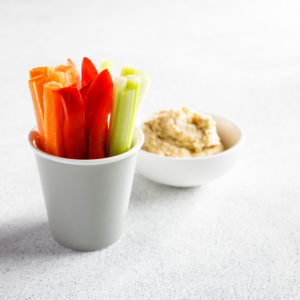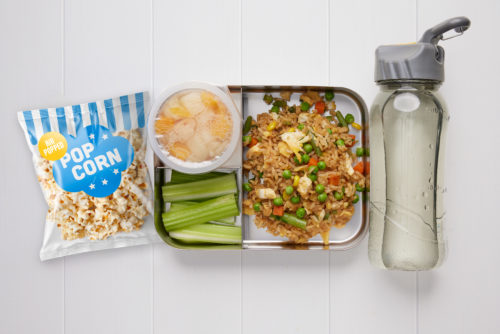Do you feel the pressure when packing a lunch box? Are you trying to pack one that appeals to a fussy eater, only takes a few minutes to pack, doesn’t cost too much and is healthy!? It’s easier than you think.
Here are our simple tips to take the pressure off and make lunch box prep stress-free.
Start with the basics. Choosing foods from the five food groups ensures your child will get the nutrients they need to grow, learn and play throughout the day.
Don’t forget a bottle of water. For more ideas, check out our interactive lunch box builder.

We eat with our eyes! However, this doesn’t mean you must spend hours preparing a lunch box filled with dinosaur sandwiches and star-shaped cheese. Make it look appealing by adding colour to the lunch box with your child’s favourite fruit and vegetables.
Got a fussy eater? Involve them! Let kids pick from healthy options – they’re more likely to eat what they choose. Watch our Lunch box video together for inspiration.
If your child is a creature of habit, you can use the lunch box as an opportunity to introduce new foods slowly. Keep most of the lunch box containing the same foods you know they will eat, then add or change one small thing at a time, like adding one baby cucumber or a cherry tomato. Once you start seeing that these new foods are eaten, then these can become regulars in the lunch box and you have successfully added a new healthy food to your child’s diet. Remember small steps make a big difference!
As kids get older they can a pack their own lunch.

Lots of dinner foods can easily be packed in the lunch box. Cook a bit extra at night, pack leftovers straight into lunch containers and store in the fridge until the next morning. This works very well with:
Finding the balance between saving time and money is challenging because convenience comes at a cost. Cooking meals and preparing snacks from scratch is usually cheaper than buying an equivalent packaged meal or snack. For example, slicing cheese and putting it with wholegrain crackers will cost around $1.50/100g compared to up to $3.80/100g for pre-packaged sliced cheese and biscuits. Buying a large tub of yoghurt and dividing it into smaller tubs for the lunch box will cost less than buying individual yoghurt tubs. Generally, the more processed a food is, the more expensive it will be.
When you need a grab-and-go snack with no preparation stock up on specials like popcorn, cartons of dried fruit or tubs of fruit in natural juice! Just ensure that the products you buy won’t expire before they can be eaten. For more ideas, read our blog 8 healthy packaged snacks to grab-and-go when time is low.
Remember healthy lunch boxes don’t have to be fancy; stick to simple items from the 5 food groups.
© Cancer Council NSW 2024 Head Office Address: 153 Dowling Street, Woolloomooloo NSW 2011. Cancer Council NSW is registered with the Australian Taxation Office as an Income Tax Exempt Charity: Charitable Fundraising Authority No. 18521.
Some images on this site have been supplied by Cancer Council Western Australia's Crunch & Sip website
Cancer Council NSW acknowledges the traditional custodians of the land on which we live and work. We pay our respects to the elders past and present and extend that respect to all other Aboriginal and Torres Strait Islander peoples.
Aboriginal Respect Symbol designed by Marcus Lee Design for Cancer Council NSW.
Sign up for FREE recipes, practical tips and up-to-date cancer prevention information in your inbox each month.
Sign up for FREE recipes, practical tips and up-to-date cancer prevention information in your inbox each month.
We will send this recipe to your inbox. Read our privacy collection statement first.